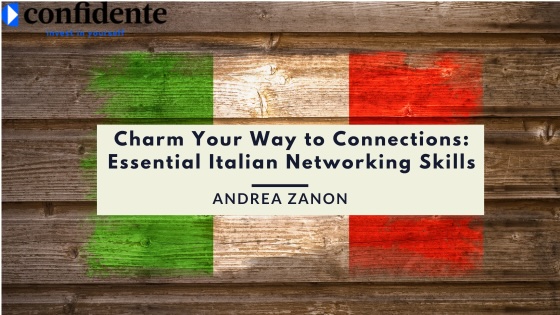Italian Greetings and Social Interactions: A Practical Guide Saying Hello and Goodbye
- Ciao! (Informal) / Salve! (Formal): Used for both greetings and farewells.
- Buongiorno! (Good day): Often shortened to “Giorno.”
o Buona giornata! (Have a good day!)
o Buondi! (Informal “good day”)
• Buona sera! (Good evening): Often shortened to “Sera.”
o Buona serata! (Have a good evening!)
- Arrivederci! (Formal) / Ci vediamo! (Informal): Goodbye, see you later/soon.
- A presto! (See you soon!) / Alla prossima! (Until next time!) / A domani! (See you
tomorrow!).
- Buona notte! (Good night): Used only when going to bed.
Meeting New People
• Piacere! (Pleasure): Short for “Piacere di conoscerti” (Pleased to meet you). Reply with
“Piacere mio!” (The pleasure is mine!).
Informal Conversations
- Come stai? / Tutto bene? / Come va?: How are you? Answer with “Tutto bene, grazie. E tu?” (All good, thanks.And you?).
- Tutto a posto? (All in order?): Informal “How are you?” Reply with “Tutto aposto!” (All good!).
- Come andiamo? (How are we doing?): Reply with “Tutto bene,” “Molto bene,” or “Tutto ottimo” (All good/Very good/Excellent).
- Allora? Tutto bene? (So, all good?): A filler phrase to start a conversation.
- Cosa mi racconti? / Cosa mi racconti di bello? (What’s up? Anything fun
happening?): A great way to engage with someone you know.
- Carissimo/a/i! (Dearest): Used between friends and close acquaintances.
Essential Phrases for Travelers
- Parla inglese? (Do you speak English?)
- Non parlo italiano. (I don’t speak Italian.)
- Mi sono perso/a. (I’m lost.)
- Aiuto! (Help!)
- Dov’è…? (Where is…?)
Useful Questions and Phrases
• Scusa/Scusi, come si dice…? (Excuse me, how do you say…?) / Cosa significa…? (What does it mean…?)
- Dove è il bagno/i servizi? (Where is the bathroom?) / Dove si trova la farmacia? (Where is the pharmacy?)
- Piano piano per favore. (Slowly, please.)
- Quanto costa…? (How much does…cost?) / Quanto viene? (How much is it?)
- Il conto, per favore. (The bill, please.)
- Posso pagare con carta/in contanti? (Can I pay by card/in cash?)
- Senza fattura. (No invoice needed.)
- Come ti chiami? (What’s your name?)
- Di dove sei? (Where are you from?)
- Quando apre il ristorante/i negozi? (When does the restaurant/shops open?)
- Perché…? (Why?) / Prendiamo l’aperitivo? (Should we have an aperitivo?) / Perché
no! (Why not!)
- Permesso, posso passare? (Excuse me, may I pass?)
- Un tavolo per due, per favore! (A table for two, please!)
- Possiamo ordinare? (Can we order?)
- Signora/Signore, scusi? (Ma’am/Sir, excuse me?)
At the Restaurant
- Vorrei… (I would like…)
- Un bicchiere di vino, per favore. (A glass of wine, please.)
- L’acqua frizzante/naturale. (Sparkling/still water.)
- Posso avere…? (Can I have…?)
- Il menu, per favore. (The menu, please.)
Shopping
- Quanto costa questo? (How much is this?)
- Posso provarlo/a? (Can I try it on?)
- Avete una taglia più grande/piccola? (Do you have a larger/smaller size?)
Colloquial Expressions
- Ecco qua/eccoci qua! (Here we are!) / Cosa prendiamo? (What are we having?): Typical waiter greeting.
- Uno sconto, per favore? (A discount, please?): Used in small shops when paying in cash.
- Non c’è problema; Nessun problema. (No problem.)
- Mi dispiace. (I’m sorry.)
- Molto gentile, grazie! / Gentilissimo! (Very kind of you!)
Additional Phrases
- Grazie, molte grazie, grazie mille! (Thank you very much!)
- Prego; non c’è di che; di niente. (You’re welcome.)
- Cosa raccomanda/consiglia? (What do you recommend/suggest?): Useful at restaurants.
- Benissimo! (Very well/very good): A way to respond when a waiter asks if everything is alright.
- Bellissimo/Bello! (Beautiful): Used for commenting on something visually appealing.
- Buonissimo/Buono! (Delicious/Good): Used for commenting on food. Other options
include “Fantastico,” “Spettacolare,” “Delizioso,” and “Squisito.”
Cultural Tips
- Greetings: Italians typically greet each other with a kiss on each cheek (starting with the right). This is more common among friends and family.
- Formality: Use “Lei” (formal “you”) when addressing strangers, older people, or those in authority. Use “tu” (informal “you”) with friends, family, and children.
- Gestures: Italians are known for their expressive hand gestures. Pay attention to body language to better understand the conversation.
